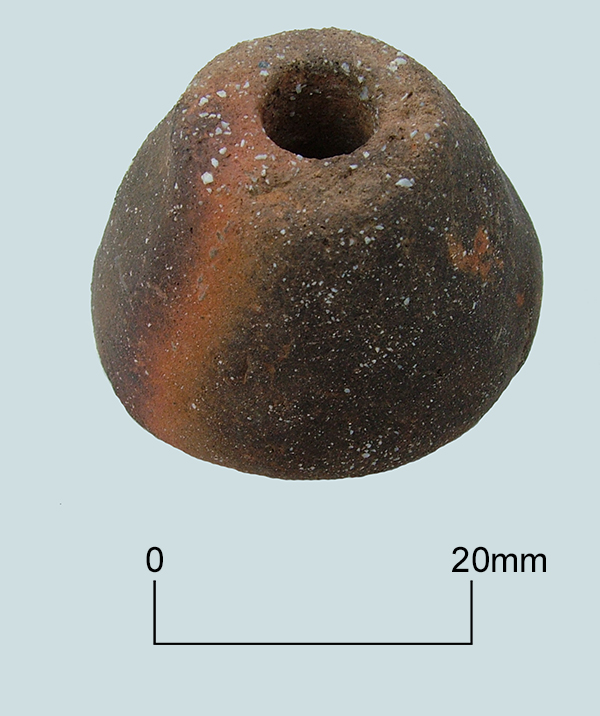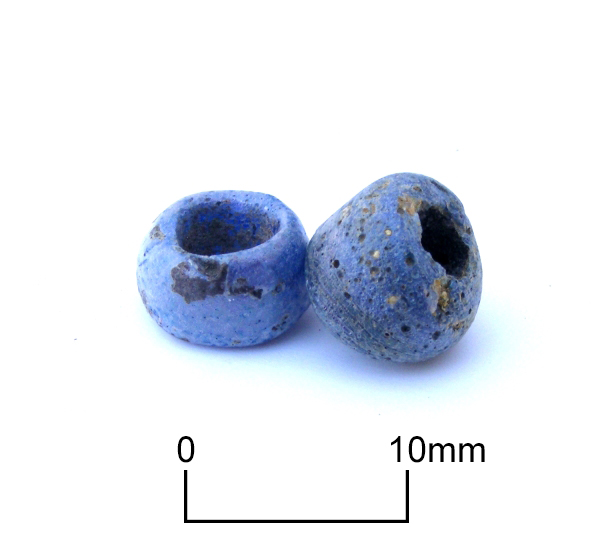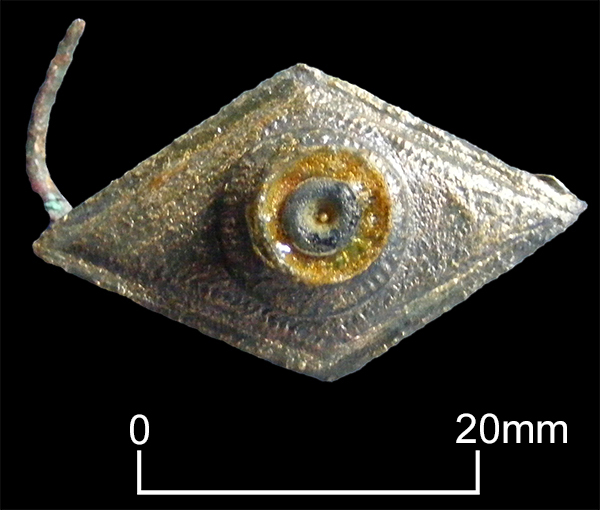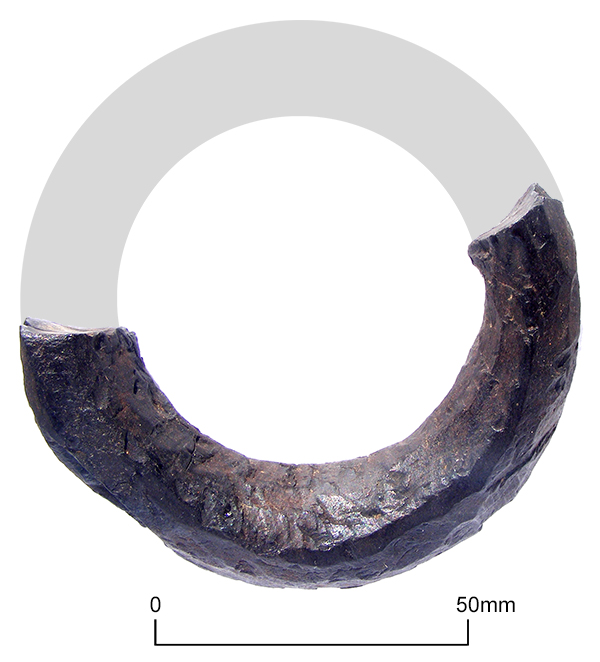
Day 119’s image shows the remains of an Anglo Saxon spearhead from grave 283 at Sarre.
The grave was very shallow, measuring only 0.24 metres deep and had been disturbed or robbed in antiquity probably in the Anglo Saxon period. Only a few of the bones of the skeleton of an adult male aged over 30 years old remained in situ.
The original position of the spearhead in the grave is unknown and it was later dislodged from the grave fill when it was cleared by the mechanical excavator before hand excavation. The spearhead would most likely have originally been located near the skull along one side of the grave edge as is common with other undisturbed graves.
The part where the spearhead was attached to the wooden shaft, the ferrule, is relativley well preserved and wood impressions of the shaft are visible on the inside of the corroded metal. The spearhead is of 6th century date, conforming to Swanton’s E4 type. Five others were found when graves from the same cemetery were excavated in the 19th century by John Brent.
References
Perkins, D. R. J. 1992. The Jutish Cemetery at Sarre Revisited: Part II. Archaeologia Cantiana Volume CX, 83-120.
Swanton, M. J. 1974. A Corpus of Anglo-Saxon Spear Types. British Archaeological Reports 4.
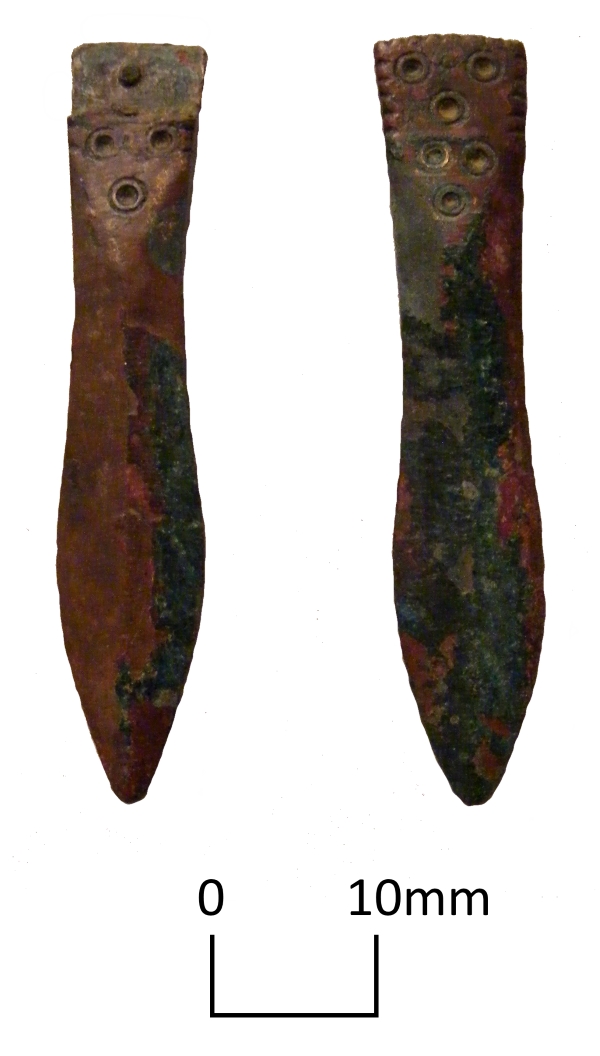 Today’s image for VM 365 Day 120 shows two decorated strap ends found in grave 276 at Sarre in 1990.
Today’s image for VM 365 Day 120 shows two decorated strap ends found in grave 276 at Sarre in 1990.
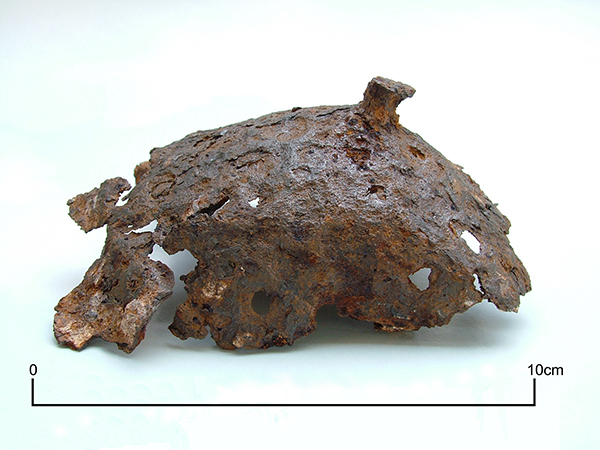

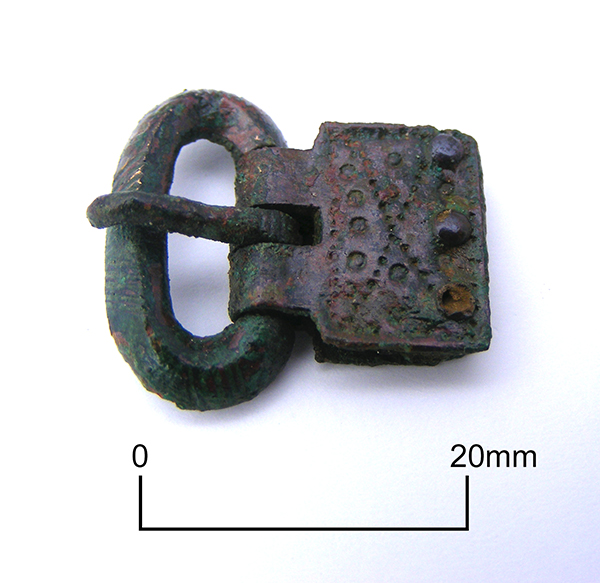
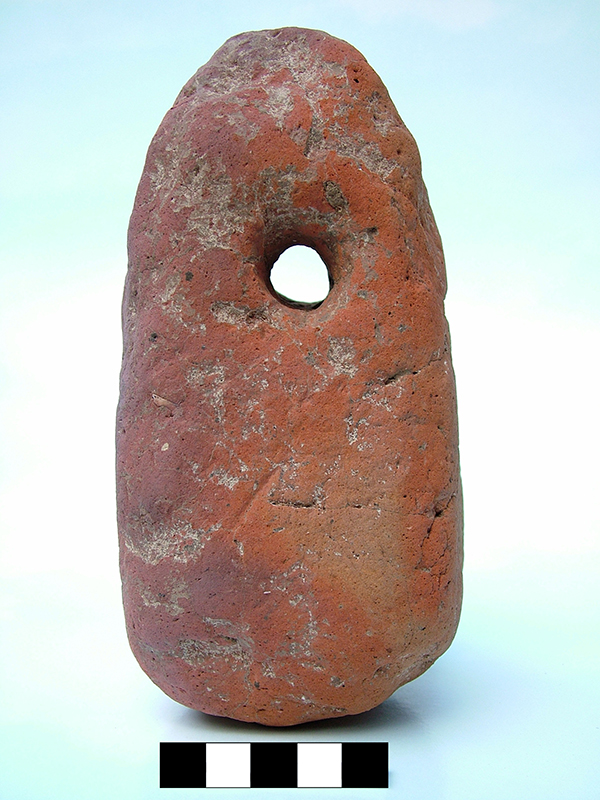 Following on from
Following on from 